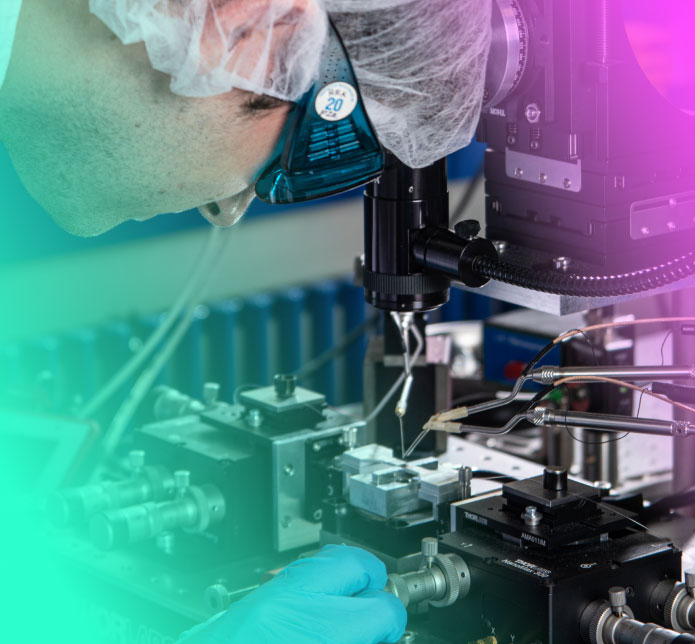NEXT-GENERATION ULTRA-HIGH-SPEED MICROWAVE
Photonic integrATed circuiTs using advancEd hybRid iNtegration
Optical Coupling
Edge coupling is PATTERN’s method of choice for optical coupling between optical fibre arrays and LNOI PICs. Its advantages:
- lowest insertion loss;
- compatible with a wide range of bandwidths;
- low sensitivity to polarisation;
- allows optical signal propagation between two waveguides/channels realised in two separate
structures (for example optical fibre/PIC or two separate PICs); - minimal losses due to light coupling.
The following parameters significantly impact the edge-coupling assembly technique:
- match of mode field diameter (MFD) values between optical input and output;
- range of operating wavelength;
- uniformity and flatness of attached facets;
- existence of alignment loop structures providing positional feedback and others.


Once the ideal alignment between the devices (indicated by maximum transmitted optical power) is determined, the optical facets are bonded together by means of an optical adhesive, resulting in a reduction of coupling losses due to the matching of the refractive index values between the waveguides. In this way, an irreversible mechanical fixation is created between the two structures, which could be PICs, fibre arrays, gain sections, lasers or photodetectors.
PATTERN partner PHIX will develop the process of optical attachment between fibre arrays and LNOI PICs. Fibre array (equipped with a spot-size converter, if necessary) will be aligned to the PIC either by alignment loops structures (preferred option) or by active alignment using photodetector, gain section or laser on the PIC. After successful alignment, an optical adhesive with matching refractive index will be used for permanent fixation.
